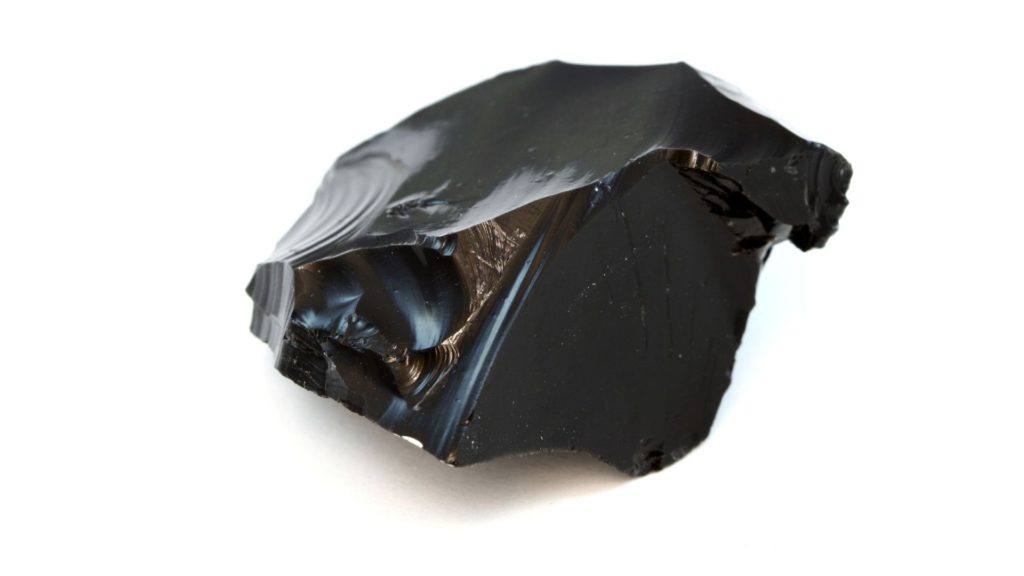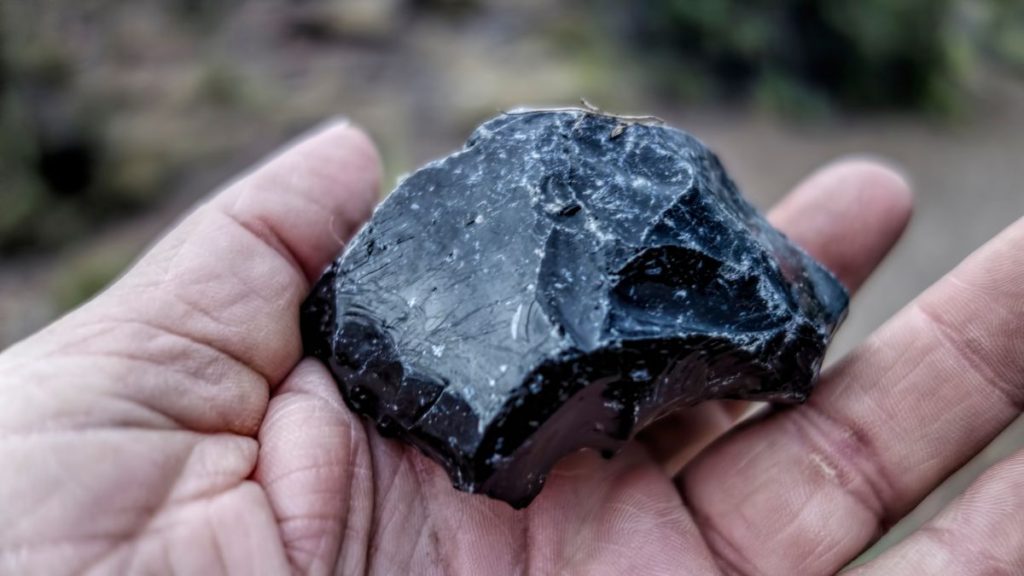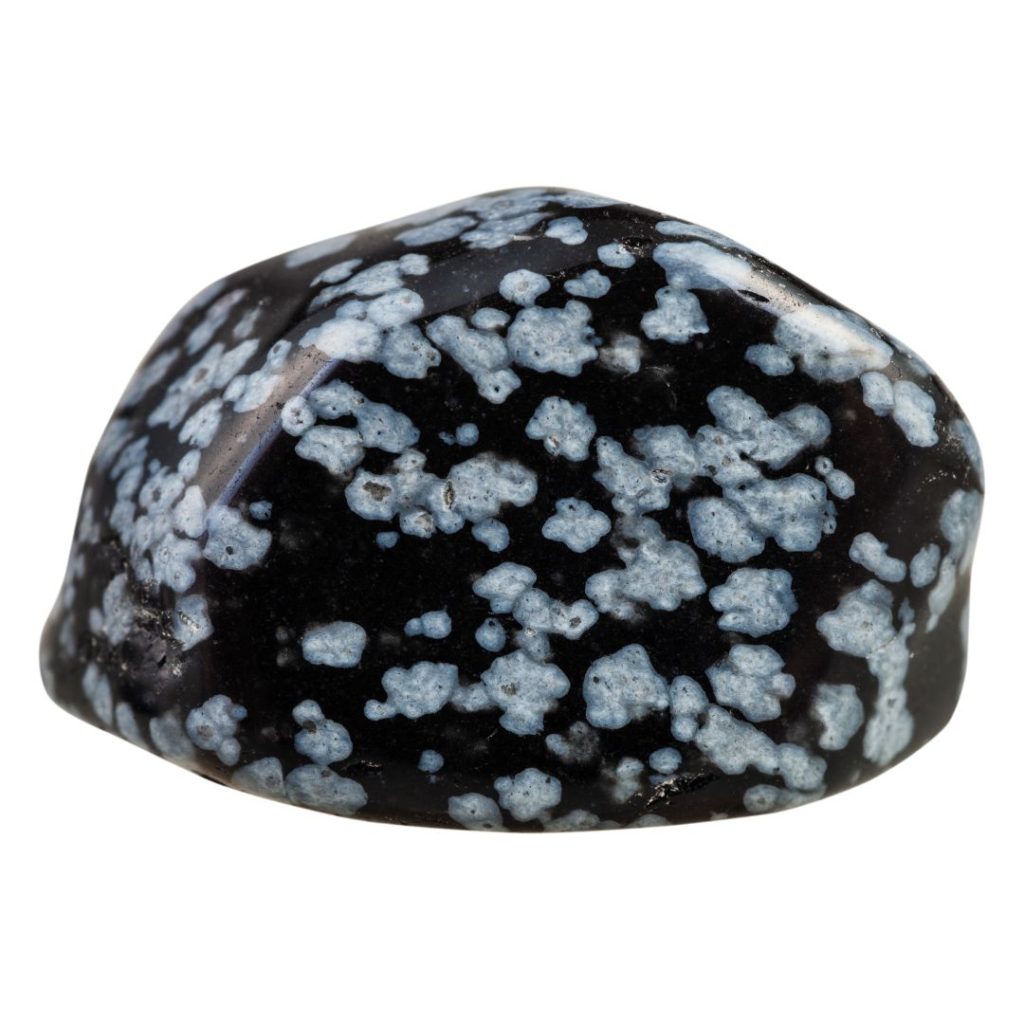Obsidian

This is a silica-rich volcanic rock. With glass as its main component, obsidian is sometimes defined as being a glassy volcanic rock, with less than 1 percent water content in its structure.
TEXTURE Glassy obsidian may contain rare phenocrysts of quartz and feldspar. It breaks with a very sharp conchoidal fracture that has been exploited since Paleolithic times for making cutting tools.
ORIGIN Volcanic, formed by the very rapid cooling of viscous felsic lava.
Group: IGNEOUS
Origin: Extrusive
Grain size: Very fine
Crystal shape: Anhedral
Classification: Felsic
Occurrence: Volcano
Color: Dark
More about Obsidian
Obsidian is a natural glass of volcanic origin that is formed by the rapid cooling of viscous lava. Obsidian is extremely rich in silica (about 65 to 80 percent), is low in water, and has a chemical composition similar to rhyolite. Obsidian has a glassy lustre and is slightly harder than window glass. Though obsidian is typically jet-black in colour, the presence of hematite (iron oxide) produces red and brown varieties, and the inclusion of tiny gas bubbles may create a golden sheen. Other types with dark bands or mottling in gray, green, or yellow are also known.

Obsidian generally contains less than 1 percent water by weight. Under high pressure at depth, rhyolitic lavas may contain up to 10 percent water, which helps to keep them fluid even at a low temperature.
Eruption to the surface, where pressure is low, permits rapid escape of this volatile water and increases the viscosity of the melt. Increased viscosity impedes crystallization, and the lava solidifies as a glass.
Different obsidians are composed of a variety of crystalline materials. Their abundant, closely spaced crystallites (microscopic embryonic crystal growths) are so numerous that the glass is opaque except on thin edges. Many samples of obsidian contain spherical clusters of radially arranged, needlelike crystals called spherulites.
Microlites (tiny polarizing crystals) of feldspar and phenocrysts (large, well-formed crystals) of quartz may also be present.
Most obsidian is associated with volcanic rocks and forms the upper portion of rhyolitic lava flows. It occurs less abundantly as thin edges of dikes and sills. The obsidians of Mount Hekla in Iceland, the Eolie Islands off the coast of Italy, and Obsidian Cliff in Yellowstone National Park, Wyoming, U.S., are all well-known occurrences.

Obsidian was used by American Indians and many other peoples for weapons, implements, tools, and ornaments and by the ancient Aztecs and Greeks for mirrors. Because of its conchoidal fracture (smooth curved surfaces and sharp edges), the sharpest stone artifacts were fashioned from obsidian; some of these— mostly arrowheads—have been dated by means of the hydration rinds that form on their exposed surfaces through time. Obsidian in attractive and variegated colours is sometimes used as a semiprecious stone.

